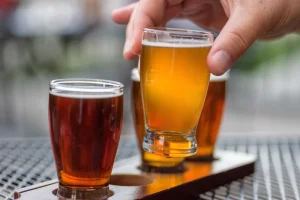
The collective unconscious, as described by Jung, is a theoretical repository of information he believed to be shared by everyone. According to Jung, certain symbols in dreams reflected universal archetypes with meanings that are similar for all people regardless of culture or location. Dubowski’s bibliography lists 208 items comprising journal articles and reviews, book chapters, government reports, letters to the editor and some conference abstracts. https://ecosoberhouse.com/ He possessed an unique knowledge of the forensic alcohol research literature including articles published in both English and German language journals. Risk factors responsible for slower than normal return to consciousness are roughly divided into four categories Table 3. Clinicians should not assume that a high BAC in patients with apparently minor trauma accounts for their obtundation, which may be due to intracranial injury or other abnormalities.

Corticosteroid therapy of alcoholic hepatitis
Naltrexone is an opioid receptor antagonist which attenuates the rewarding effect of alcohol (Swift et al., 1994; Jarjour et al., 2009). Acamprosate prevents the craving for alcohol by modulating the imbalance between glutamatergic and GABAergic systems (Kiefer and Mann, 2010; Spanagel et al., 2014). The clinical uses of these drugs are primarily designated for alcoholic patients who have completed alcohol withdrawal and are committed to abstinence (Kahan et al., 1995; Krishnan-Sarin et al., 2008; Garbutt, 2009). However, contraindications exist for all three of these drugs and all have limitations for use.
Medical Advice Disclaimer
- For one, research suggests that infants should be placed on their backs when put down to sleep, and their cribs should not contain any items which pose suffocation threats, such as blankets, pillows or padded crib bumpers (cushions that cover the bars of a crib).
- In severe withdrawal and toxicity, symptoms may resemble those of central nervous system injury or infection.
- One of the most widely used such tables in forensic science and legal medicine was constructed by Professor Kurt M. Dubowski (1921–2016) from the University of Oklahoma (10).
- In another study using PET and 11C-glucose, 12 healthy male subjects and nine male alcoholic inpatients who had been kept from alcohol and drugs for 4 weeks were studied (Wik et al., 1988).
- Neuromuscular blocking agents that undergo hepatic metabolism may have a prolonged duration of action.
Alcohol and other drug (AOD) withdrawal also includes changes in mental state (anxiety, depression, and craving) that may outlast the physiological symptoms and motivate renewed AOD consumption. Coordinated interneuronal communication can help account for relatively transient features of alcoholism, such as acute tolerance, physical withdrawal symptoms, and the initiation of reinforcement, which can lead to dependence. However, studying these processes alone does not provide a complete understanding of longer-term manifestations of alcoholism, such as the uncontrolled craving that may contribute to relapse years after cessation of drinking. The mechanisms underlying alcohol’s chronic effects involve processes called intracellular signaling, the cell’s internal biochemical response to receptor activation by extracellular chemical messengers. The FDA’s 2013 recommendation for tighter controls on opiate prescriptions left many patients addicted to prescription drugs like OxyContin unable to obtain legitimate prescriptions. This created a black market for the drug, where prices soared to $80 or more for a single pill.
Early studies of alcohol influence and/or intoxication
Understanding the impact of sleep on cognitive function should help you understand that cramming all night for a test may be not effective and can even prove counterproductive. One popular hypothesis of sleep incorporates the perspective of evolutionary psychology. Evolutionary psychology is a discipline that studies how universal patterns of behavior and cognitive processes have evolved over time as a result of natural selection. Variations and adaptations in cognition and behavior make individuals more or less successful in reproducing and passing their genes to their offspring. One hypothesis from this perspective might argue that sleep is essential to restore resources that are expended during the day.

Such patients should also have additional evaluation to search for evidence of trauma or toxicity due to other substances. In US states, the legal definition of intoxication is a BAC of ≥ 0.08% (≥ 80 mg/dL, [17.4 mmol/L]); 0.08% is used most commonly. A person can usually tell when they stages of alcohol poisoning are intoxicated, but it may be challenging to spot the signs in others. The differential diagnosis of decreased conscious level in an intoxicated patient may be challenging. Alcohol intoxication alone can cause coma, but other causes must also be considered, particularly head injury.

Tolerance can cause the user to increase the amount of drug used to a dangerous level—even to the point of overdose and death. There is a tremendous amount of variability among sufferers, both in terms of how symptoms of narcolepsy manifest and the effectiveness of currently available treatment options. This is illustrated by McCarty’s (2010) case study of a 50-year-old woman who sought help for the excessive sleepiness during normal waking hours that she had experienced for several years. She indicated that she had fallen asleep at inappropriate or dangerous times, including while eating, while socializing with friends, and while driving her car.
